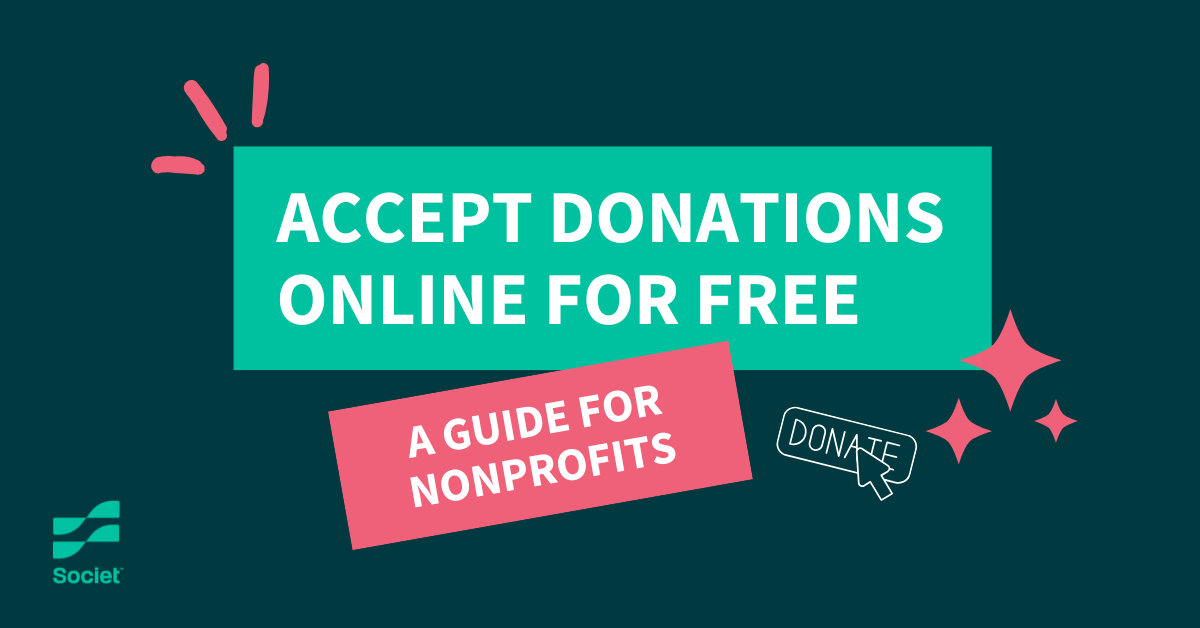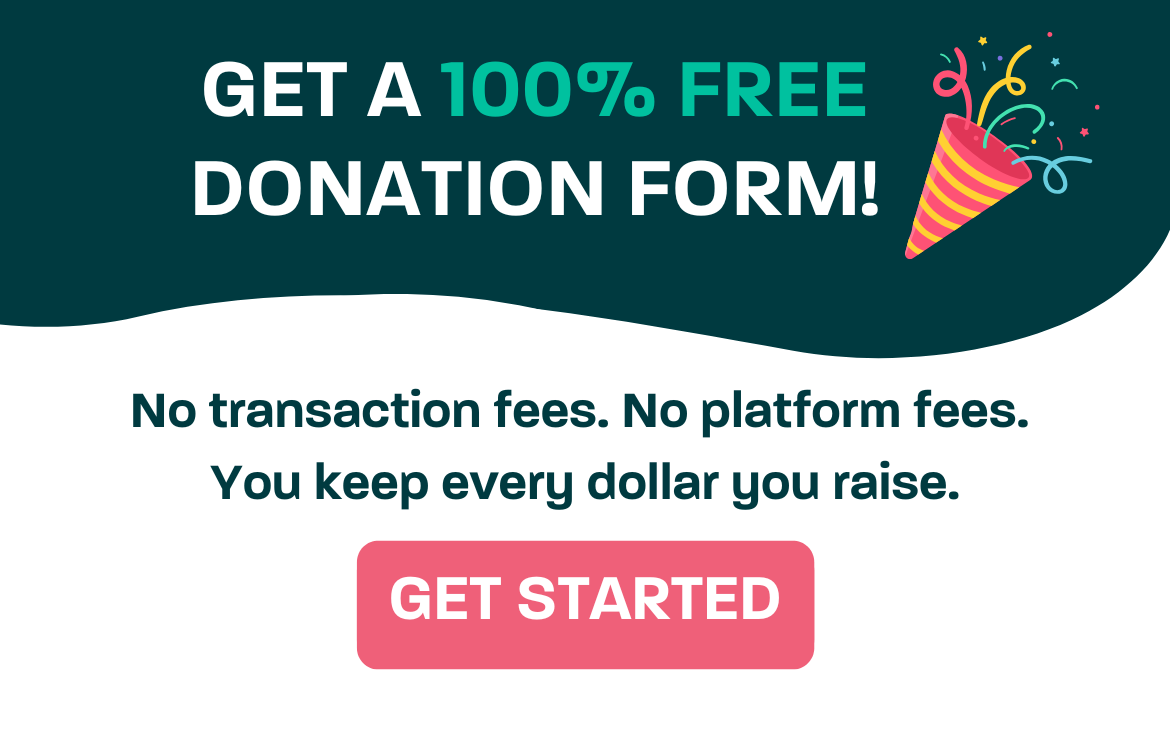
In this comprehensive guide, we’ll take you through a step-by-step process of how to accept donations online, how nonprofits can streamline this process, and the best practices for accepting credit card donations online.
Plus, we’ll introduce you to Glass Register, a game-changing tool that allows you to keep 100% of the donations you receive.
Why Accept Donations Online?
The digital landscape has revolutionized how we interact, communicate, and conduct transactions. For nonprofits, this means embracing technology to streamline fundraising efforts. Accepting donations online offers several benefits:
- Convenience for Donors: Online donations allow supporters to give at any time, from anywhere, using a variety of payment methods.
- Increased Reach: By accepting donations online, nonprofits can reach a global audience, breaking geographical barriers.
- Efficiency: Online systems automate many administrative tasks, reducing the workload on staff and volunteers.
- Data Insights: Digital platforms provide valuable data on donor behavior, helping organizations tailor their strategies.
How to Accept Credit Card Donations Online
To effectively accept donations online, nonprofits need to follow these 5 key steps:
Step 1: Choose the Right Platform
Selecting a reliable platform is crucial. Look for features like ease of use, security, and customization options. Some popular choices include:
- Square for nonprofits: Popular for POS transactions – 2.9% + $0.30
- Venmo for nonprofits: Popular for quick money transfers – 1.9% + $0.10
- PaylPal for nonprofits: Popular for online giving – $1.99 + $0.49
- Glass Register: Popular for online giving that matches your brand – FREE
Glass Register free donation forms for nonprofits stand out as an excellent choice because the platform allows you to keep 100% of your donations, with no credit card or platform fees.
Step 2: Set Up a Donation Page
Your website should have a dedicated donation page that’s easy to navigate to, so have a clear donate button on your website that’s easy to find!
For your donation page, make sure it includes compelling visuals, a clear call-to-action, and information about how donations will be used.
Pro tip: Simplify the Process – Minimize the number of steps required to complete a donation. A simple, user-friendly form increases the likelihood of completing a transaction.
Step 3: Integrate Payment Gateways
Payment gateways are essential for processing transactions. Ensure your platform supports multiple payment methods, including credit cards, PayPal, digital wallets and ACH transfers to cater to different donor preferences.
Pro tip: Ensure Security – Use platforms that comply with PCI DSS standards to protect donor information. This builds trust and encourages more people to donate.
Step 4: Optimize for Mobile
With more people using smartphones, your donation page must be mobile-friendly. This ensures a seamless experience for donors on any device.
Step 5: Promote Your Donation Page
Use social media, email newsletters, and other marketing channels to drive traffic to your donation page. Highlight stories of impact to inspire giving.
How Do Nonprofits Accept Donations Online?
Nonprofits have a number of options available to them to accept donations online.
- You can use a third-party platform like PayPal that sends donors away from your website, or
- you can use an integrated solution like Glass Register that allows you to put the donation form directly on your website.
PayPal fees for nonprofits are $1.99 + $0.49 per transaction. Glass Register, on the other hand, is 100% free, and the donation form lives on your website with your branding.

Strategies to accept donations online
In terms of strategies for accepting donations online effectively, here are some best practices:
- Leverage Social Media: Platforms like Facebook and Instagram offer donation tools that nonprofits can use to reach wider audiences. Regularly update your followers with stories of impact and calls to action.
- Email Campaigns: Personalized email campaigns can significantly boost online donations. Use segmentation to tailor messages to different donor groups, and include direct links to your donation page.
- Recurring Donations: Encourage supporters to set up recurring donations. This provides a steady stream of income and increases donor retention.
- Peer-to-Peer Fundraising: Empower your supporters to fundraise on your behalf. Provide them with tools and resources to create their own fundraising pages linked to your main donation platform.
- Utilize Nonprofit CRM: A nonprofit CRM like Sumac CRM can help manage donor relationships, track interactions, and personalize communication, enhancing your fundraising efforts.
- Thank and Acknowledge: Immediately acknowledge credit card donations with an automated thank-you email. This not only confirms the transaction but also reinforces donor appreciation.
Why Choose Glass Register for Accepting Donations Online?
When it comes to accepting donations online, Glass Register stands out as a premier choice for nonprofits. Here’s why:
- No Fees: Unlike other platforms, Glass Register charges no credit card fees and no platform fees. This means you keep 100% of the donations you receive, maximizing your fundraising efforts.
- User-Friendly Interface: Glass Register is designed with ease of use in mind, making it simple for both nonprofits and donors to navigate.
- Secure Transactions: With top-notch security features, you can assure donors that their information is safe and secure.
- Customization: Tailor your donation page to reflect your nonprofit’s branding and mission, creating a cohesive and professional online presence.
- Comprehensive Support: Glass Register offers excellent customer support to help you set up and manage your online donations efficiently.
Conclusion
In a world where digital interactions are becoming the norm, the ability to accept donations online is crucial for nonprofit success.
By choosing the right platform, optimizing your online presence, and leveraging tools like Glass Register, you can maximize your fundraising potential and make a greater impact in your community.
Remember, the key to successful online fundraising is not just about having the right tools, but also about building meaningful relationships with your supporters. Keep your donors informed, appreciated, and engaged, and they will continue to support your mission for years to come.
For nonprofits looking to accept donations online without losing a portion to fees, Glass Register is the ideal solution. With no credit card fees and no platform fees, you can rest assured that every dollar donated goes directly to supporting your cause. Visit Glass Register today to learn more and start maximizing your online donations.


